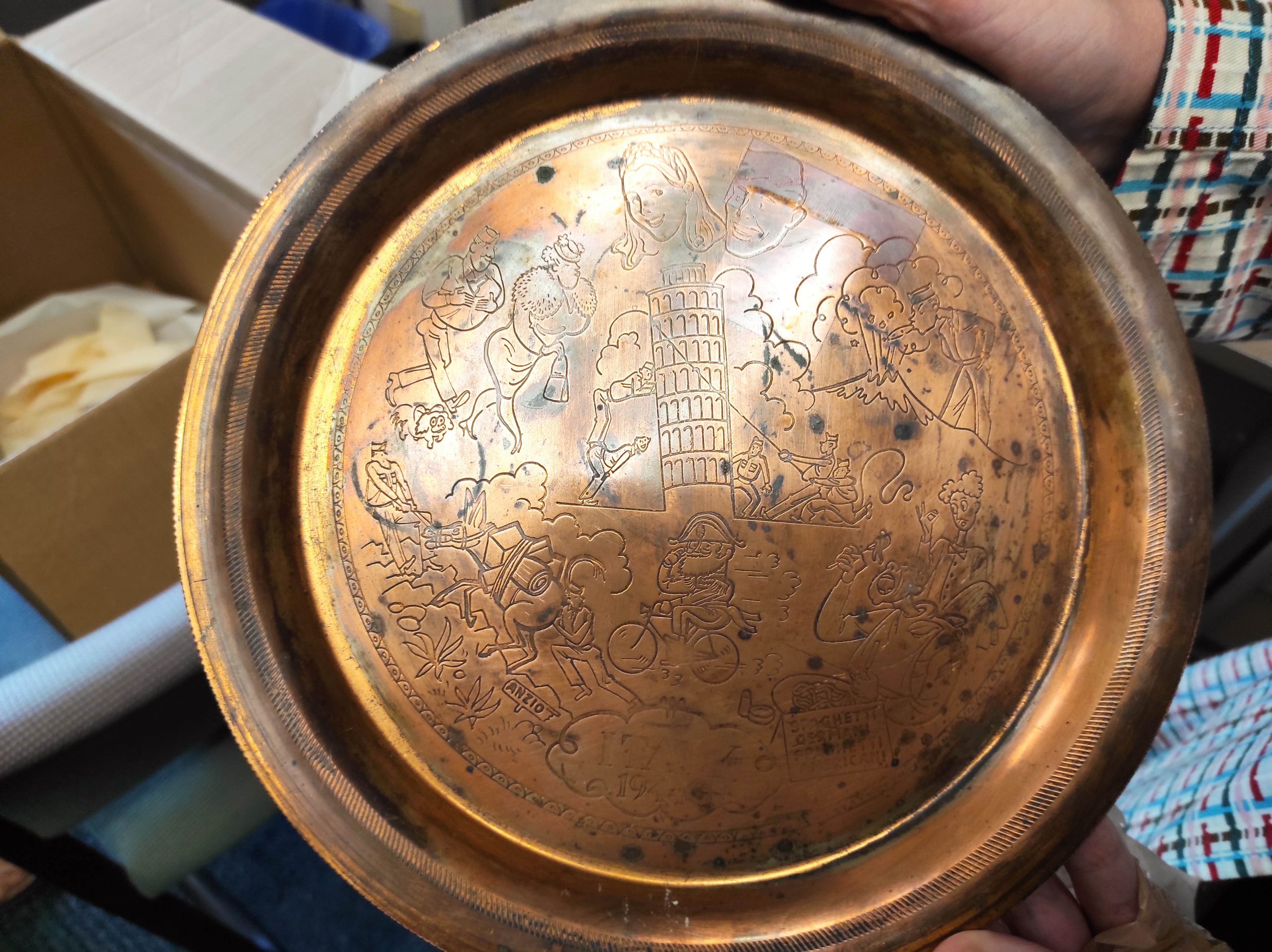America: Hidden Treasures

Madeline Northup
Walking down the long, dusty isles of Oxford’s local antique store, I spotted several bronze and ceramic plates lining the wall in the right corner of the room. I slowly made my way over to them, careful not to knock over any threadbare stuffed animals and stacks of old sheet music. Finally reaching them, I gazed upon a variety of languages, translating the ones I was familiar with in my head. There was a German plate with the Vienna Opera House sketched upon it and the small inscription of “Wien” underneath, one with a Japanese cherry blossom, and a small cracked plate with a drawing of a Spanish villa surrounded by beautiful, vibrant flowers.


Yet, it was not any of these that caught my eye. Amongst the dainty etchings and delicate handiwork sat a rusty bronze plate, cloudy with age, with the inscription “Italy 1944-5” on it. I immediately picked it up, excited at the prospect of finding a genuine antique from the end of World War II, especially from the country that my grandfather left at the same time. Upon it were comical drawings of American soldiers interacting with Italians and Italy in general. It presented a truly stereotypical view of what life was like in Italy during that time, as perceived by the soldiers. American soldiers trying to erect the Tower of Pisa, blow out what could only be an erupting Mt. Vesuvius, and push an incredibly stubborn pack mule up a hill away from Anzio, the sight of a famous battle, were just some of the depictions displayed on the plate.

The most shocking imagery, which later helped identify what kind of person the plate was made by, was of the drawing of a soldier eating spaghetti while an Italian waiter caters to him. Instead of eating Italian spaghetti, though, he is eating “Spaghetti Americani.” Above this, a scrawled “Spaghetti Germani” is scratched out, as German-Italian relations gradually became more and more strained throughout World War II, to the point of an absolute breakdown. This reference to “Spaghetti Germani” indicates that this was an American-made souvenir for soldiers, as those who knew the Italian language would have said “Spaghetti Tedesci” instead.
What did this bronze plate symbolize for the soldiers who purchased it? Perhaps it was a reminder of the hardships they faced in war, and how they overcame them with fortitude. Perhaps it was a small slice of the Italian culture they took part in while overseas. Or perhaps it was something bigger: something to pass down to their children and grandchildren to teach them how they came to appreciate the Italian culture, language, and way of life in general. To an Italian American soldier, maybe it was just a small souvenir of home.

Oxford does not have a large Italian population. Exactly how this bronze plate came into possession of the antique store is unknown to me and lost in the record books. But, through finding it, I realized that there are pieces of different cultures everywhere, especially Italian culture. These little treasures are what bring diversity to America, and what truly define the nation. One only needs to look for them in the seemingly hidden places to see what is really in plain sight.